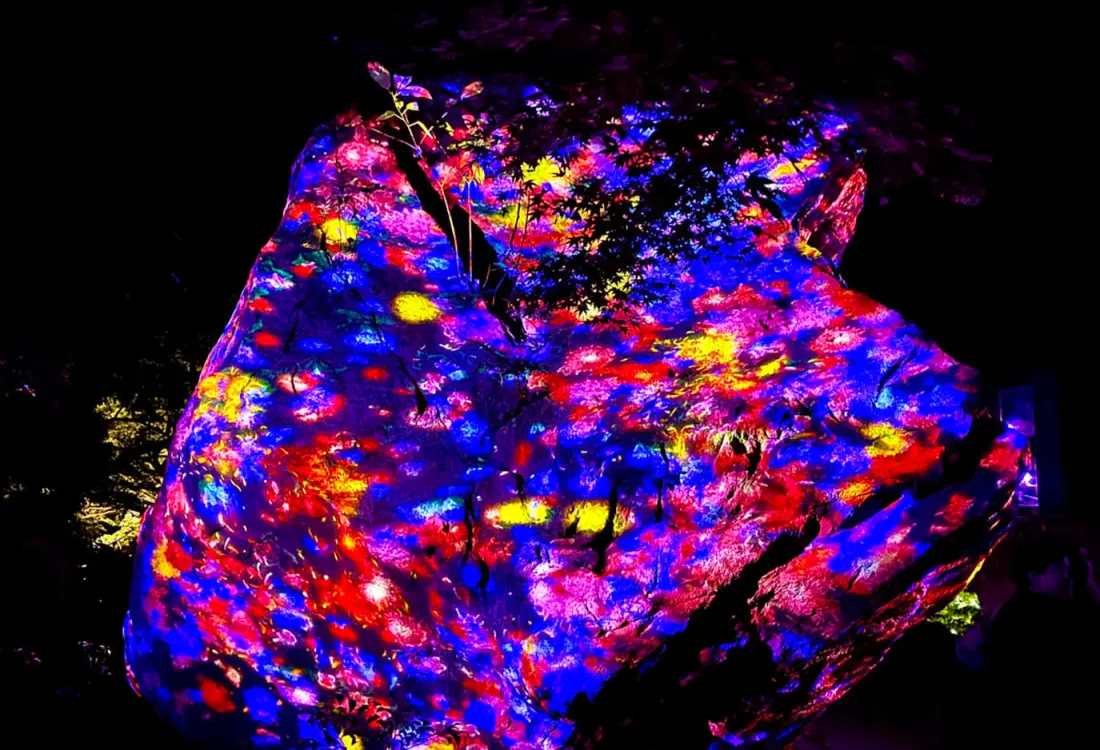
TeamLab breathes history at Mifuneyama Rakuen
in Saga
One of the world’s premier art collectives, teamLab—launched in Tokyo in 2001 and now exhibiting worldwide—utilizes art to encourage new ways of seeing the world that bring people together using extraordinary interactive exhibitions engaging the senses.
One of the team’s project sites, the Mifuneyama Rakuen in Takeo, Saga Prefecture, is home to a stunning array of natural features, beginning with a 3,000-year-old sacred tree—thereby making it the perfect canvas for the creation of teamLab’s fantastical worlds. Mifuneyama (Mount Mifune) is said to have risen from the Ariake Sea, and its name (“ship mountain”) is taken from the legend wherein Empress Jingu moored her ship there upon returning from her voyage to the kingdom of Silla on the Korean peninsula. Mifuneyama Rakuen is a sprawling, 500,000-square-meter garden lying at the mountain’s base, which was designed in the 1840s by Shigeyoshi Nabeshima, the 28th lord of Takeo.
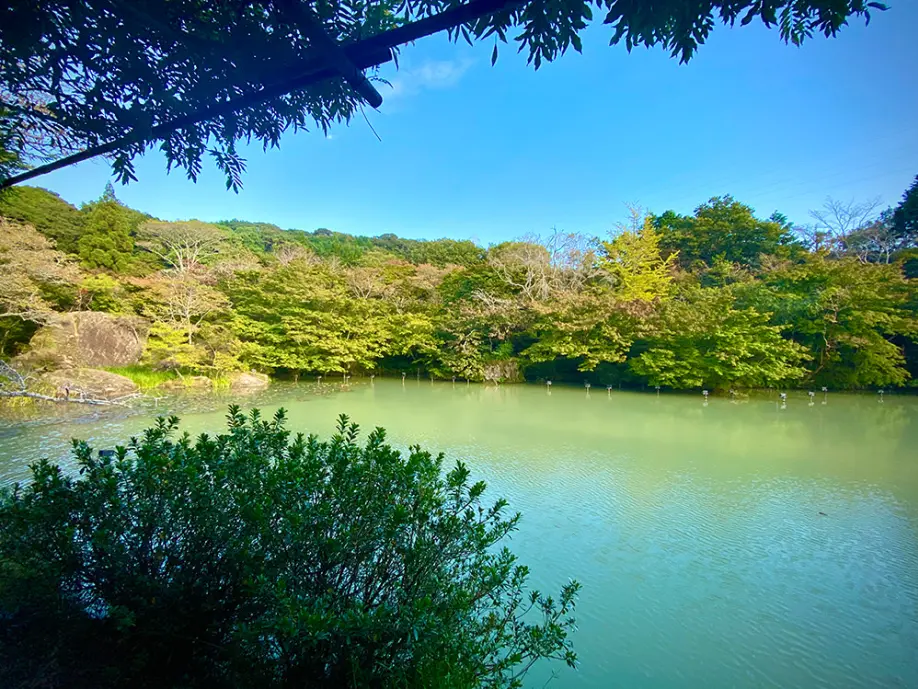
The exhibition “teamLab: A Forest Where Gods Live”, features an astounding 22 individual installations, each of which features a completely unique sensorial encounter with light and sound. The starting point lies at the bottom of the mountain, where projected koi (carp fish) swim and whirl underneath on the surface of Mifuneyama Rakuen pond—slowly at first, and then gradually more frenetically.

The installations are designed to interact with their audiences through motion and touch. These include the delightful EN TEA HOUSE, a pop-up café where flowers bloom and dance in and around your cup of green tea as you pick it up to drink; large, jelly bean-like lamps floating on the surface of another pond that flash when you touch them; and an extraordinary installation inside the grounds of an old bath house on the mountain, where shapeshifting images created from LED displays dart around gigantesque megalith structures in response to your movements.

This last exhibit, titled “Megaliths in the Bath House Ruins,” is a quintessential teamLab piece that invites us to feel the history of the bath house and the surrounding ancient forest, as well as the thousands of years that are yet to come in the future—thereby conceptualizing our miniscule place in the space-time continuum of the universe.

We visited the teamLab exhibition at night, where the dynamic interplay between the scintillating technicolor lights, the eerie acoustic backdrop projected from the treetops, and the dark shadows thrown onto the surrounding forest made the experience feel like we had entered an entirely different world.
One of the most incredible moments of the entire night was climbing the mountain and suddenly ascending at the mouth of a cave where Gyōki, a famous monk and philanthropist, had carved 500 Arhat (enlightened Buddhist) statues in the early 8th century. The installation featured dancing calligraphy imagery projected onto the cave wall.

A guide standing nearby noticed the mesmerized expressions on our faces, and engaged us in conversation. He explained that Gyōki had been instrumental in helping to erect the Great Buddha statue in Nara’s Todaiji Temple—and then recounted his own experience inside caves in his younger years. “You become one with the silence inside,” he told us. “It’s almost like being a ninja.”
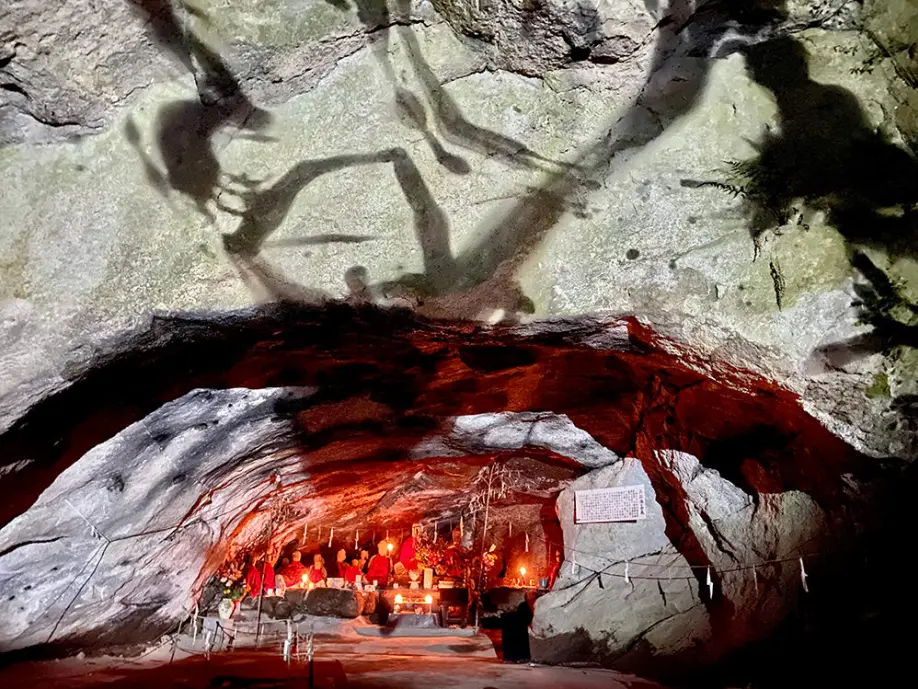
Pondering his intriguing words, we made our way toward our last stop of the night: the Mifuneyama Rakuen Hotel atop the mountain, which was the site of another dramatic installation. Suddenly emerging into the indoor environment of the hotel lobby after having spent the previous couple of hours immersed in the natural forest outdoors was a somewhat disorienting sensation in and of itself, but the visual difference of the environment was striking.

The lantern-based installation, crafted using Venetian glass from the Italian island of Murano and titled “Forest and Spiral of Resonating Lamps in the Forest - One Stroke”, immerses you in an exquisite sea of muted chromatics, from icy white to turquoise to soft purple to striking vermillion red, along with numerous tones in between. Although the pattern is seemingly random, it is actually synched to the movement around it, where the presence of a nearby human sets off a chain reaction of illumination among other lamps that eventually bounces back to the original.

And this, perhaps, may be among the profoundly thought-provoking, inspirational messages that teamLab wishes us to consider: the magnificent borderless world we live in, in which we are all interconnected.
While teamLab: A Forest Where Gods Live finished in early November 2020, the installation in the lobby of the Mifuneyama Rakuen Hotel is ongoing, and the Megaliths in the Bath House Ruins and other indoor works are part of a new permanent sauna and art experience that opened this year.
The mountain park is also a magnificent place for a daytime stroll to enjoy soft, fragrant winds and seasonal flowers.
Click here for the latest Mifuneyama Rakuen event information.

Photos by Solveig Boergen
Solveig Boergen is a Tokyo-based photographer originally from Germany who has spent more than three decades living in Asia(Japan, China, Hong Kong, Taiwan, Thailand and Nepal). Her work aims to share human stories, and to show realities that might otherwise remain unseen.Besides travel photography, she specializes in portraits that convey deep emotion, such as newborn babies with their families.

Kimberly Hughes
Kimberly Hughes is a freelance writer, translator, and community organizer who is originally from the desert of the southwestern U.S. and has been based in Tokyo since 2001. She is somewhat addicted to global travel, and also loves cooking, gardening and reading.
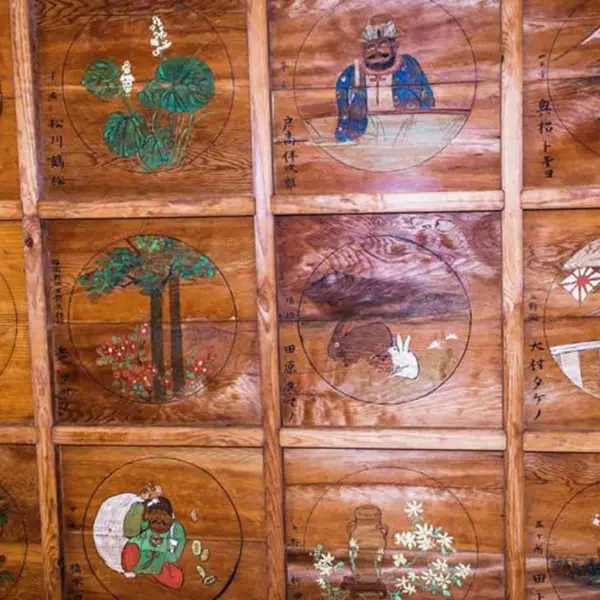 Shonenji Temple in Takachiho: A fascinating past and present
Shonenji Temple in Takachiho: A fascinating past and present Karatsu, Imari and Arita: A Trip to Discover Saga Ceramics
Karatsu, Imari and Arita: A Trip to Discover Saga Ceramics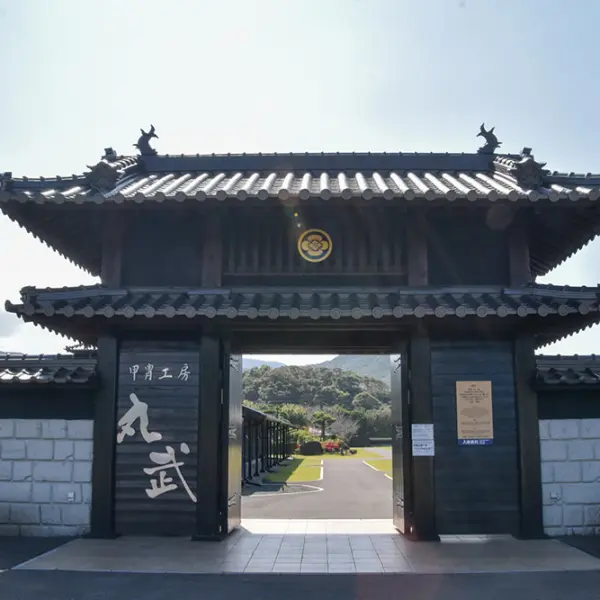 Immerse Yourself in the History and Culture of Japan’s Samurai Warriors at Marutake Sangyo
Immerse Yourself in the History and Culture of Japan’s Samurai Warriors at Marutake Sangyo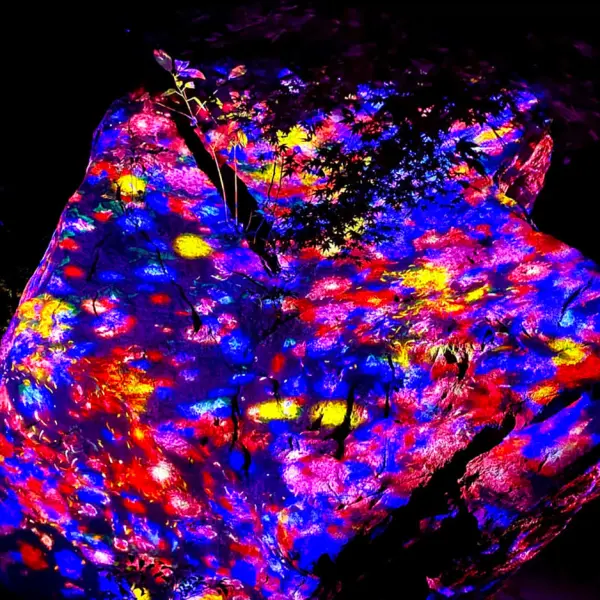 TeamLab breathes history at Mifuneyama Rakuen in Saga
TeamLab breathes history at Mifuneyama Rakuen in Saga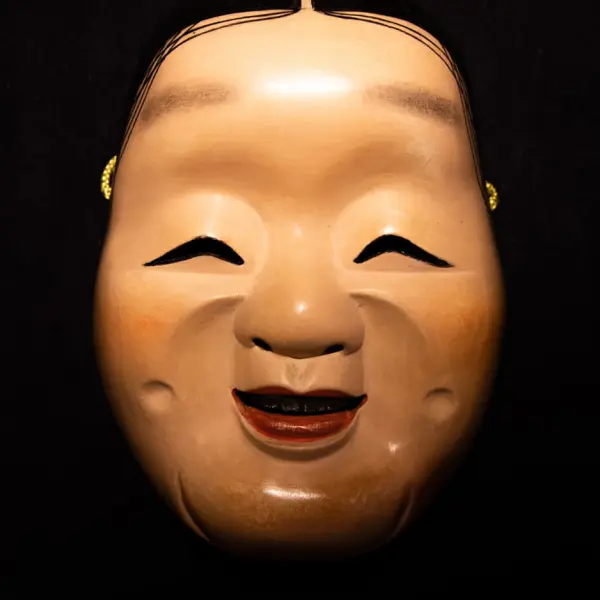 Spooky Castles, Wild Boar, Wax, and Kagura!
Spooky Castles, Wild Boar, Wax, and Kagura!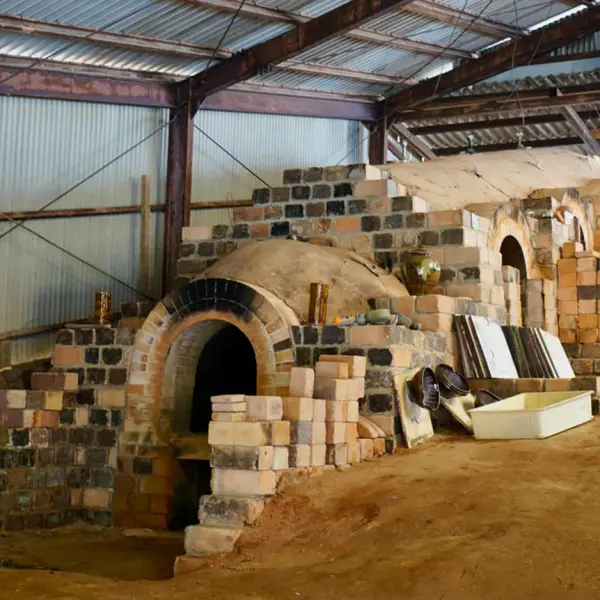 Koishiwara Pottery: From Climbing Kilns to Flying Dot Patterns
Koishiwara Pottery: From Climbing Kilns to Flying Dot Patterns A Rare Glimpse into the World of Katana Sword-Making with Matsunaga, a Kumamoto Swordsmith
A Rare Glimpse into the World of Katana Sword-Making with Matsunaga, a Kumamoto Swordsmith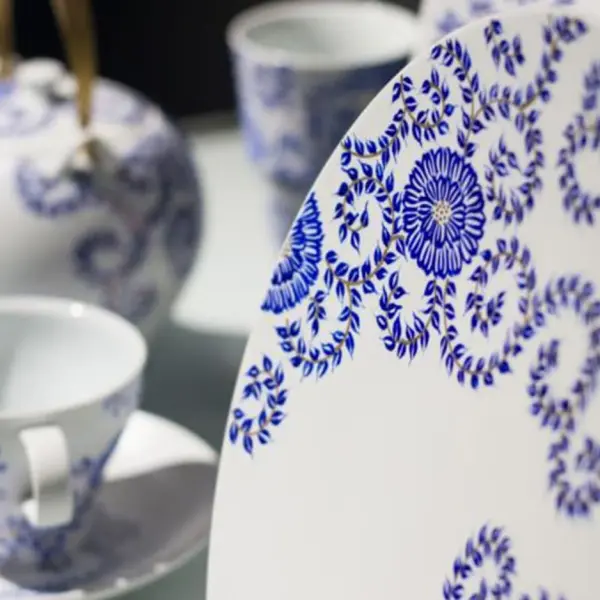 The Ancient Tradition of Ceramics Found in Saga Prefecture
The Ancient Tradition of Ceramics Found in Saga Prefecture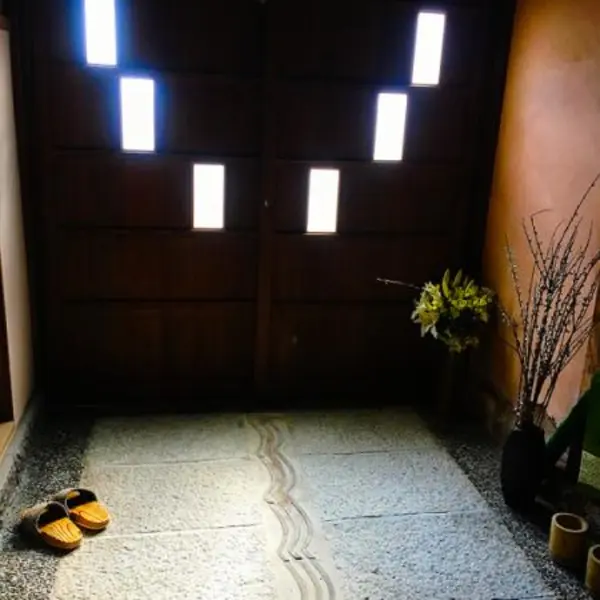 Taketa, Oita: An alluring artscape
Taketa, Oita: An alluring artscape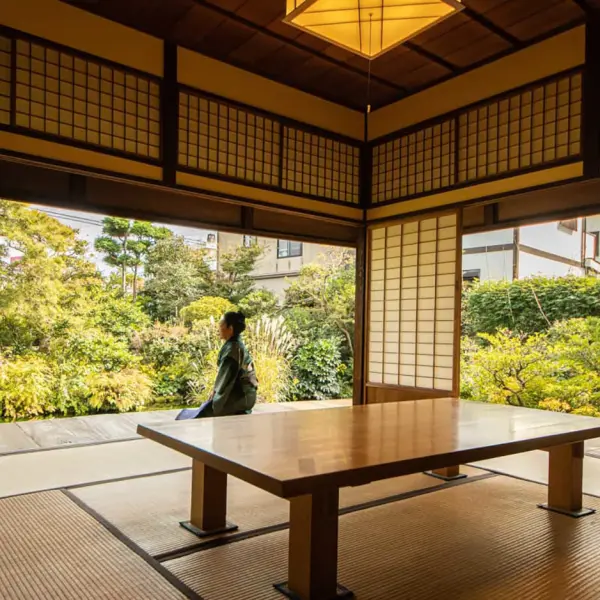 Samurai Road, Garden, and Dessert
Samurai Road, Garden, and Dessert




